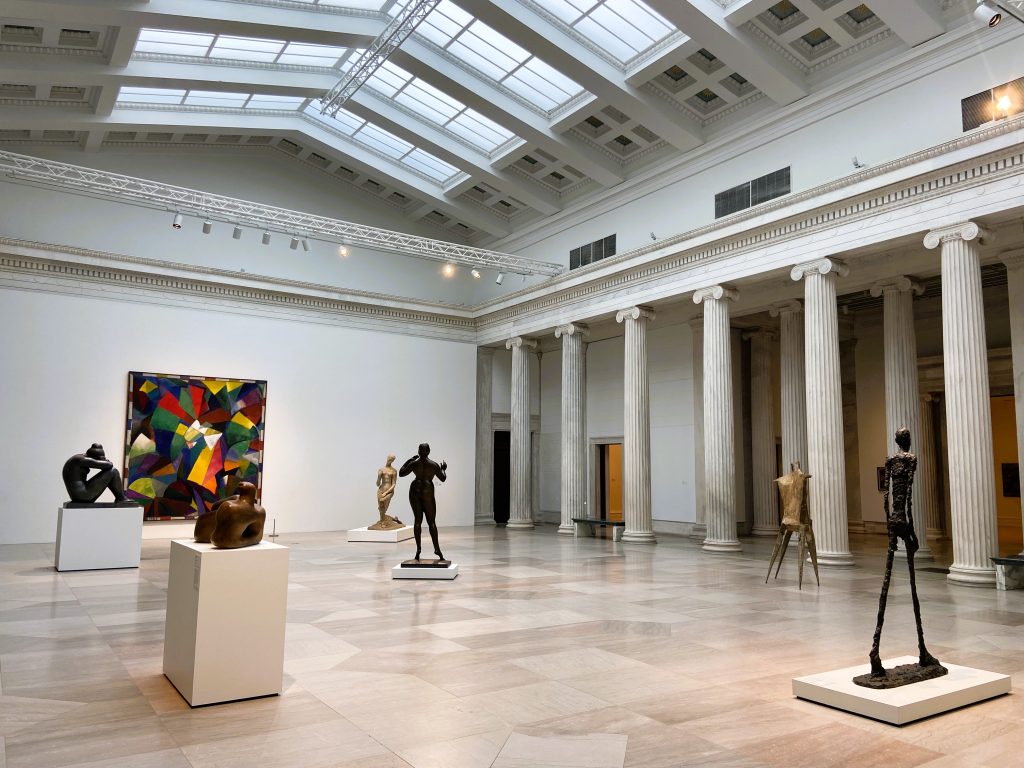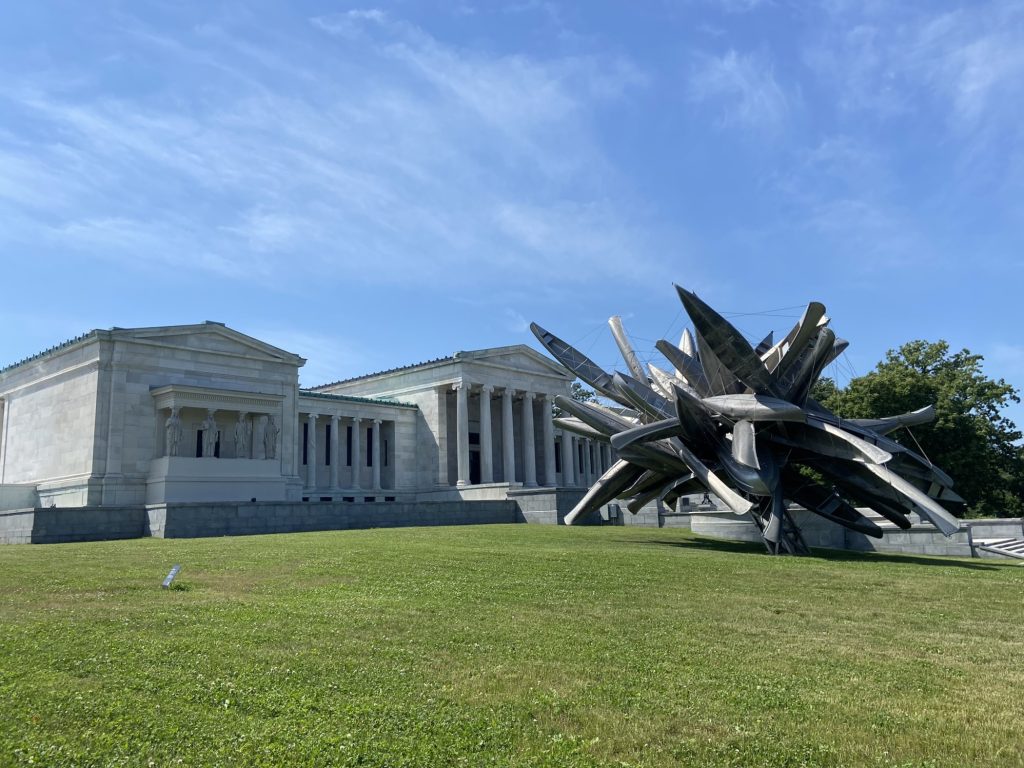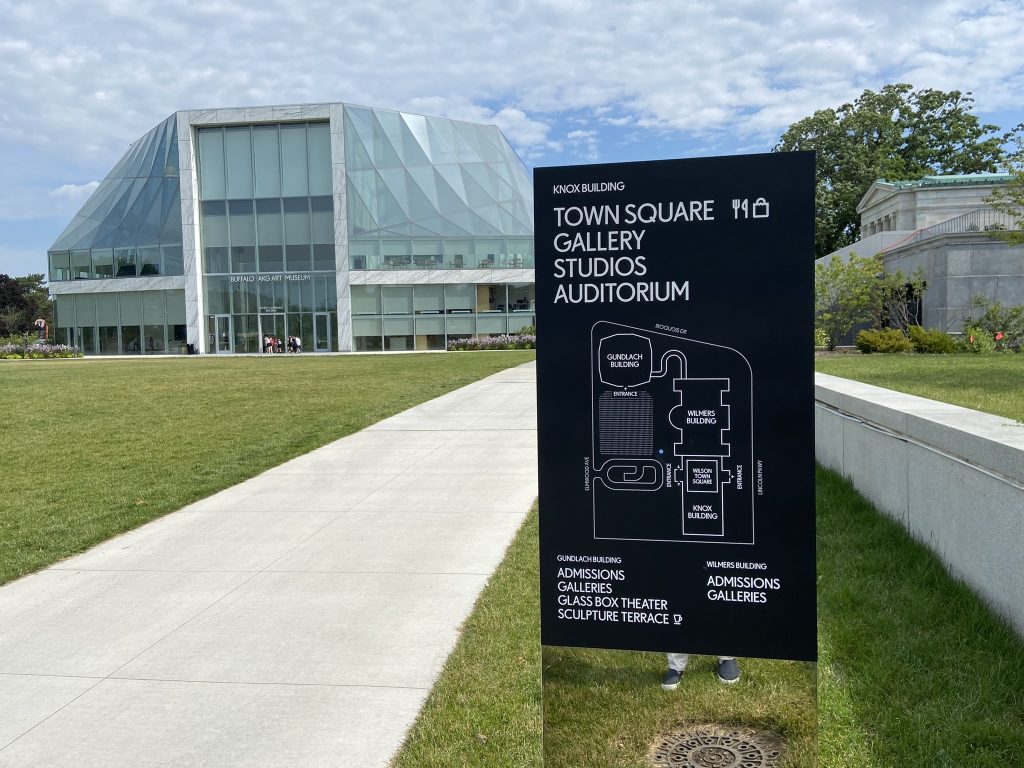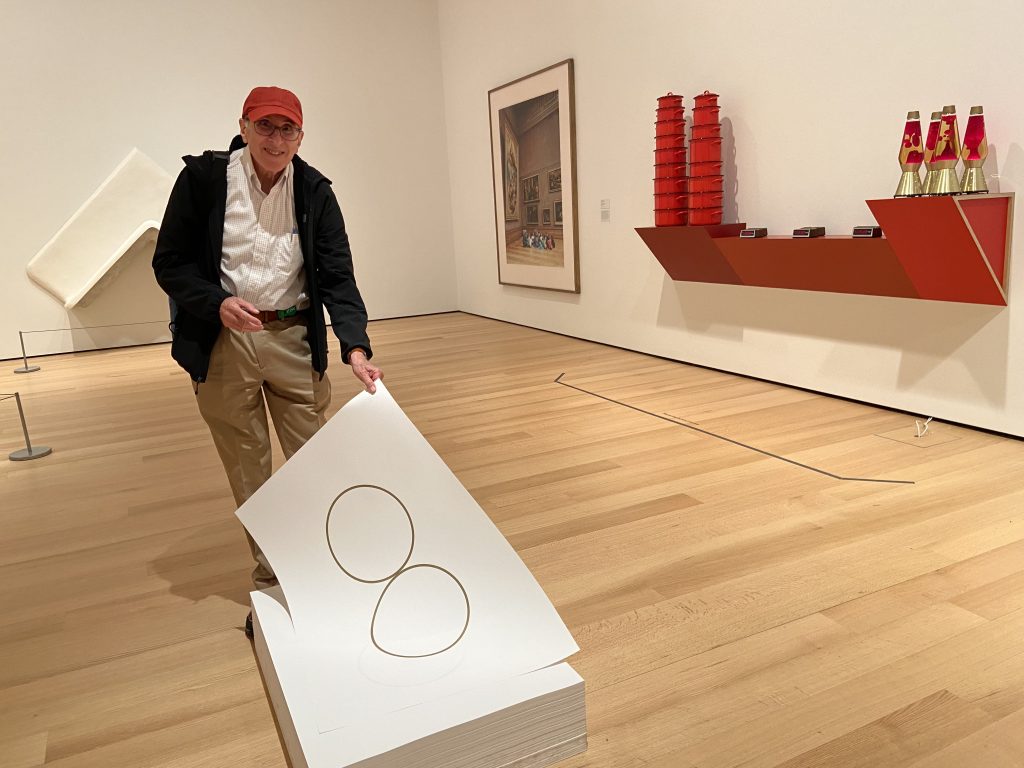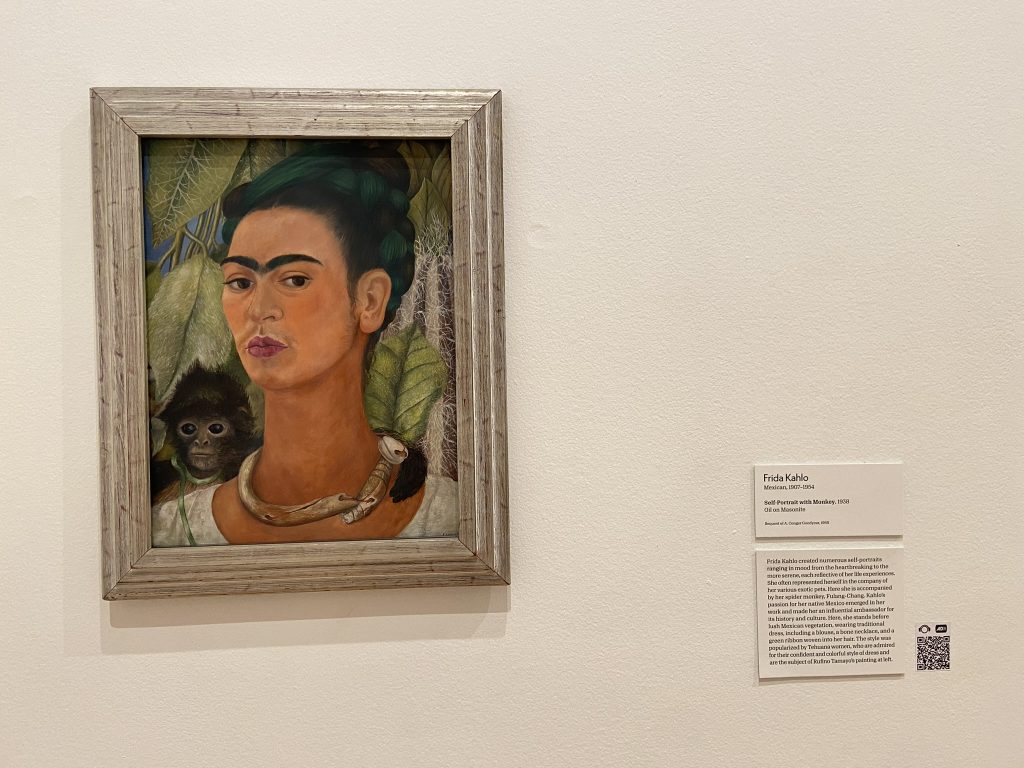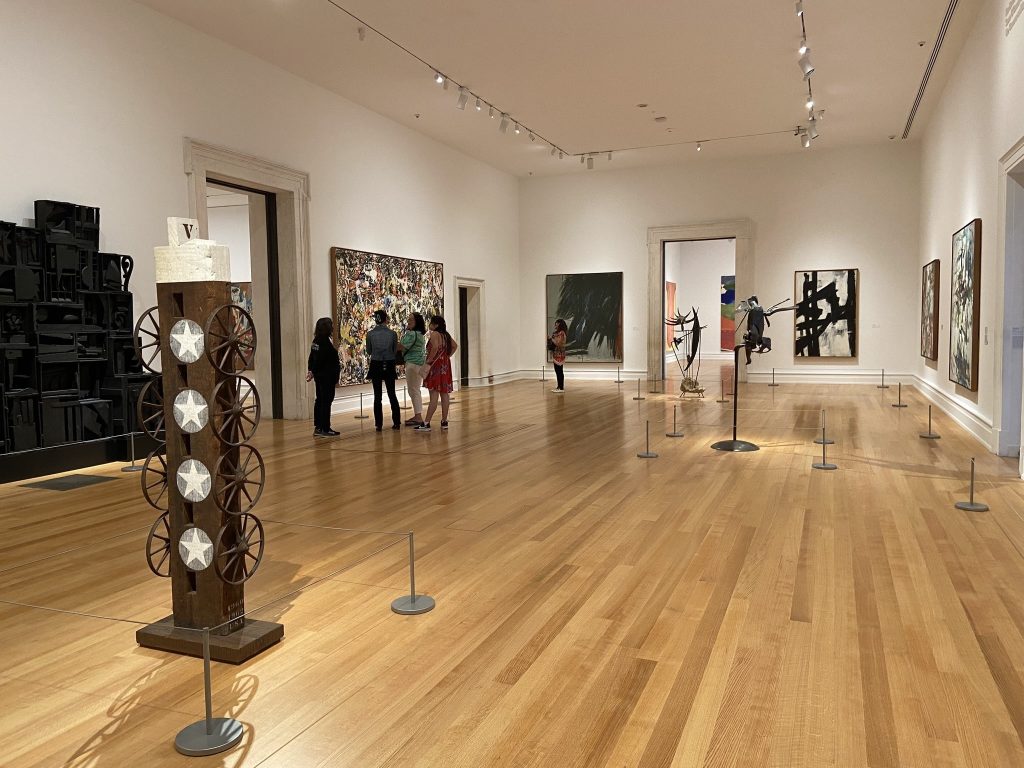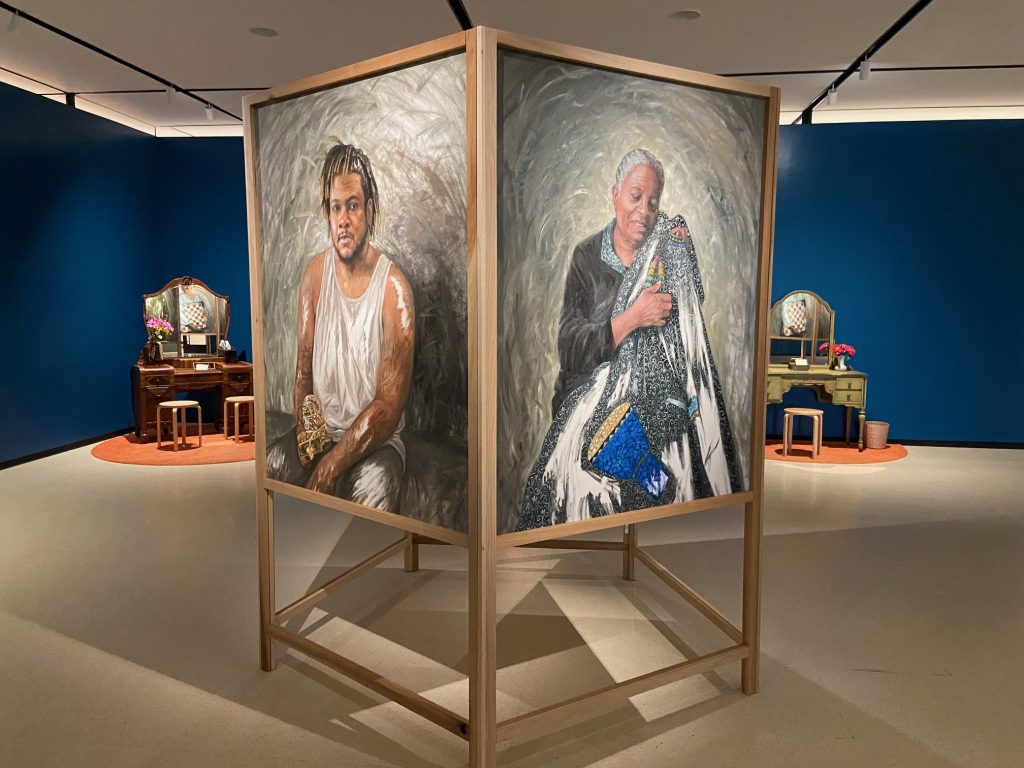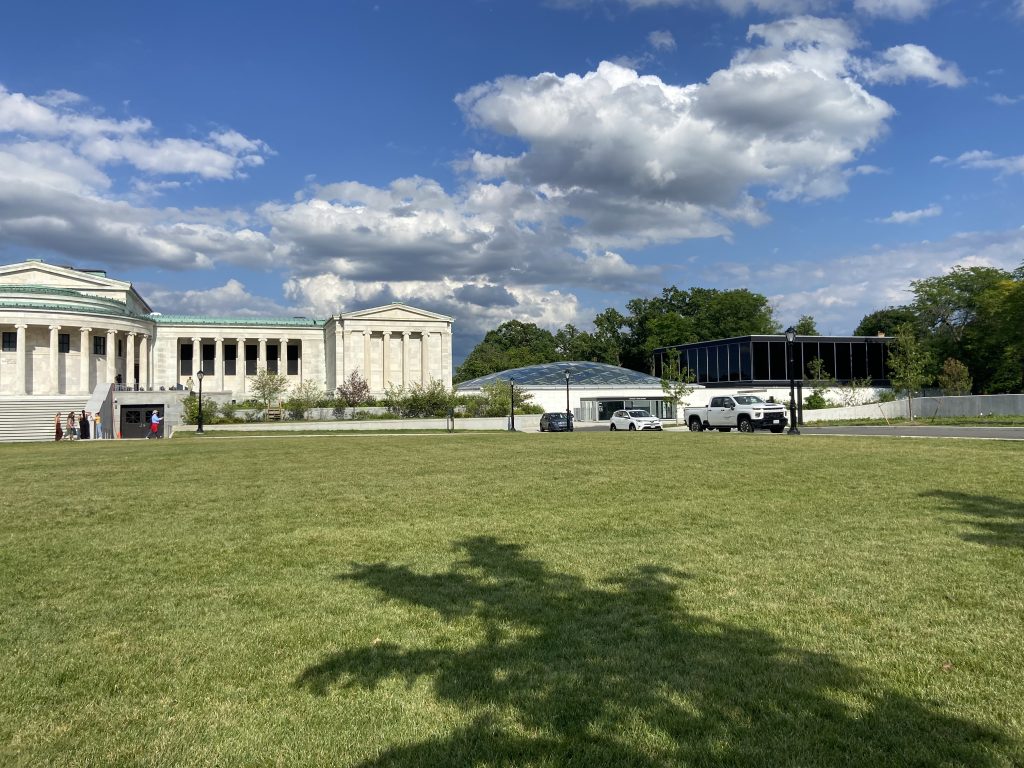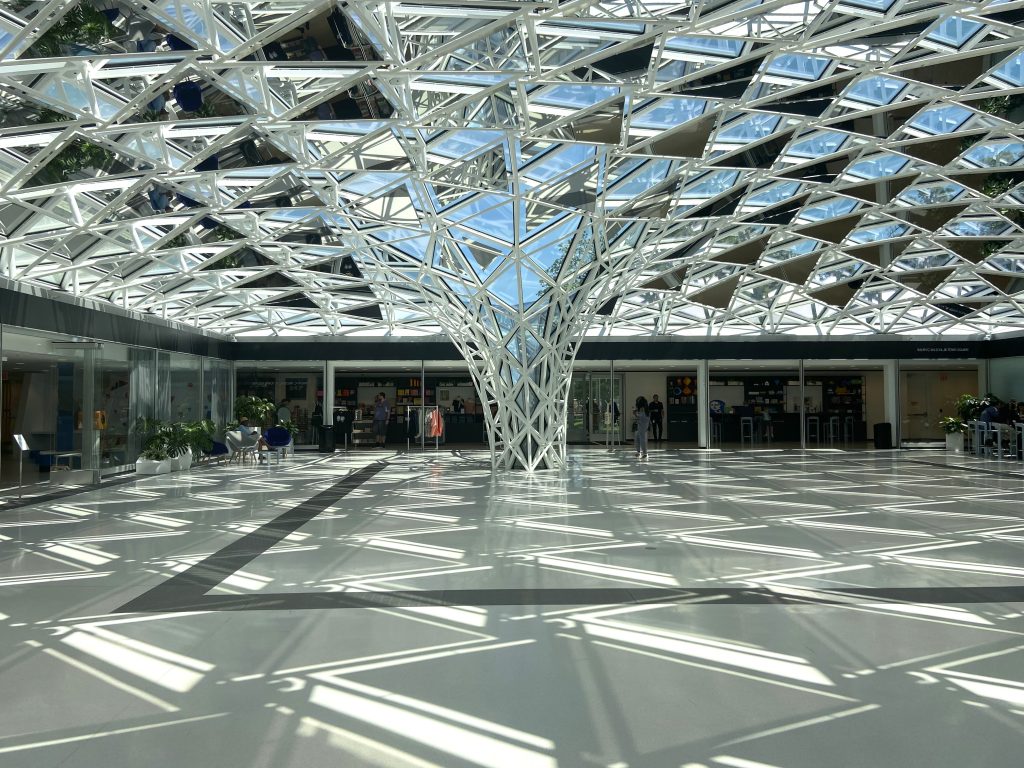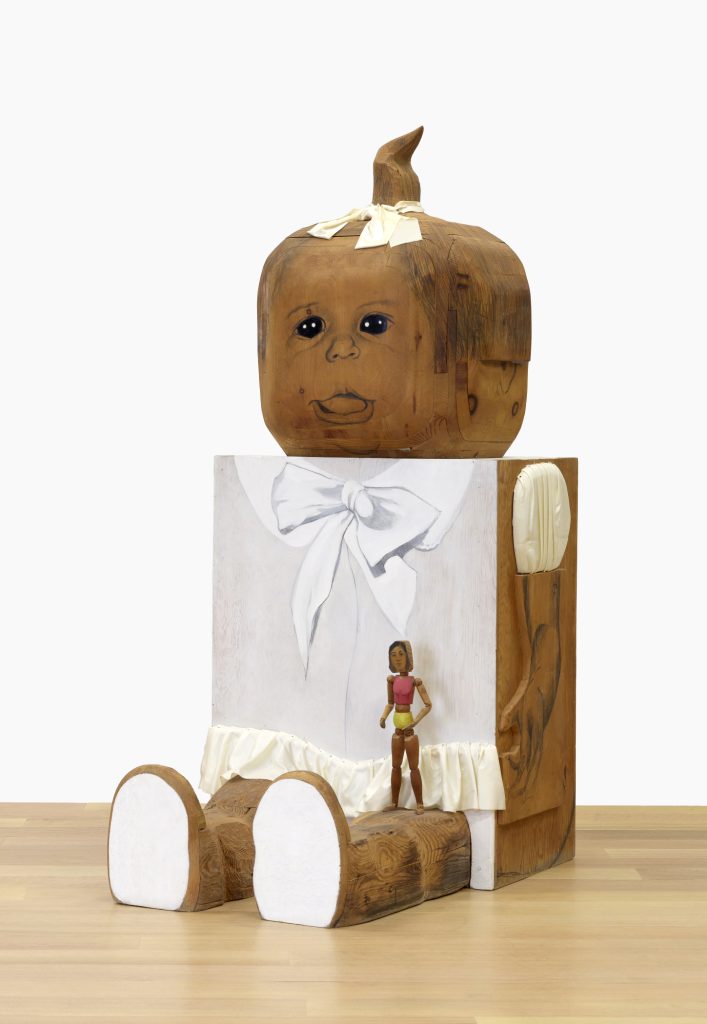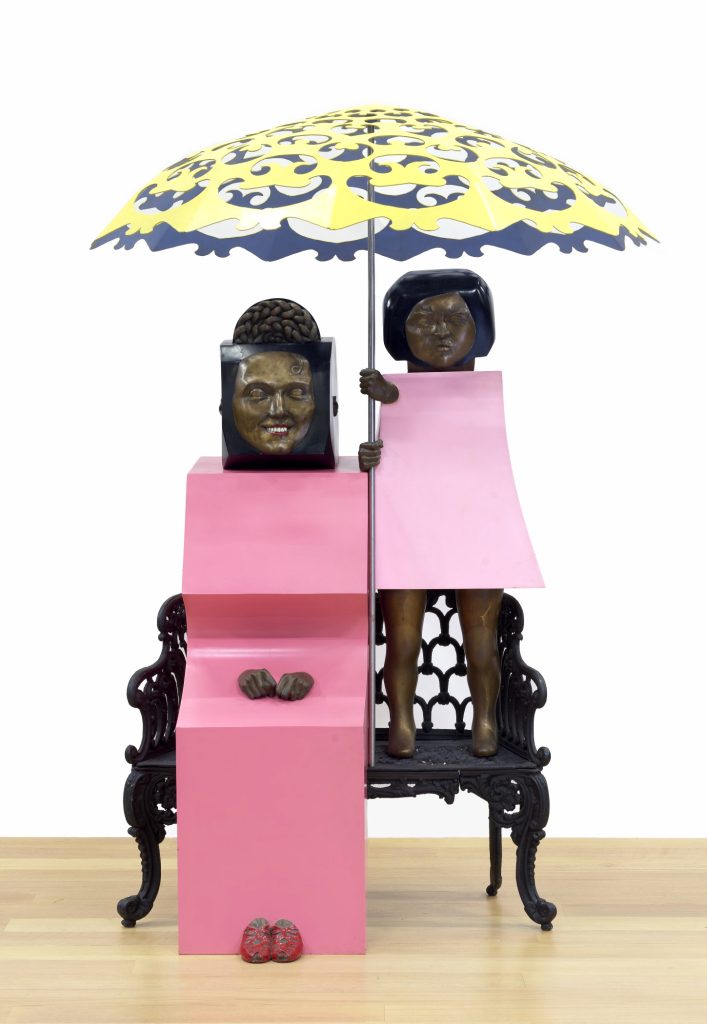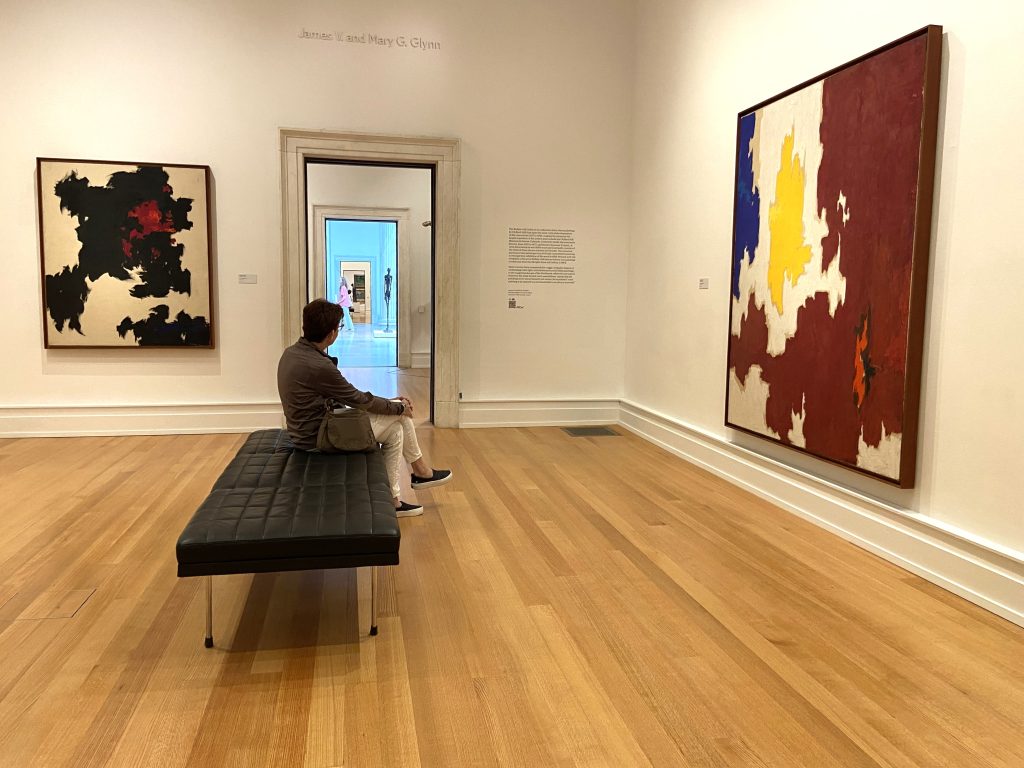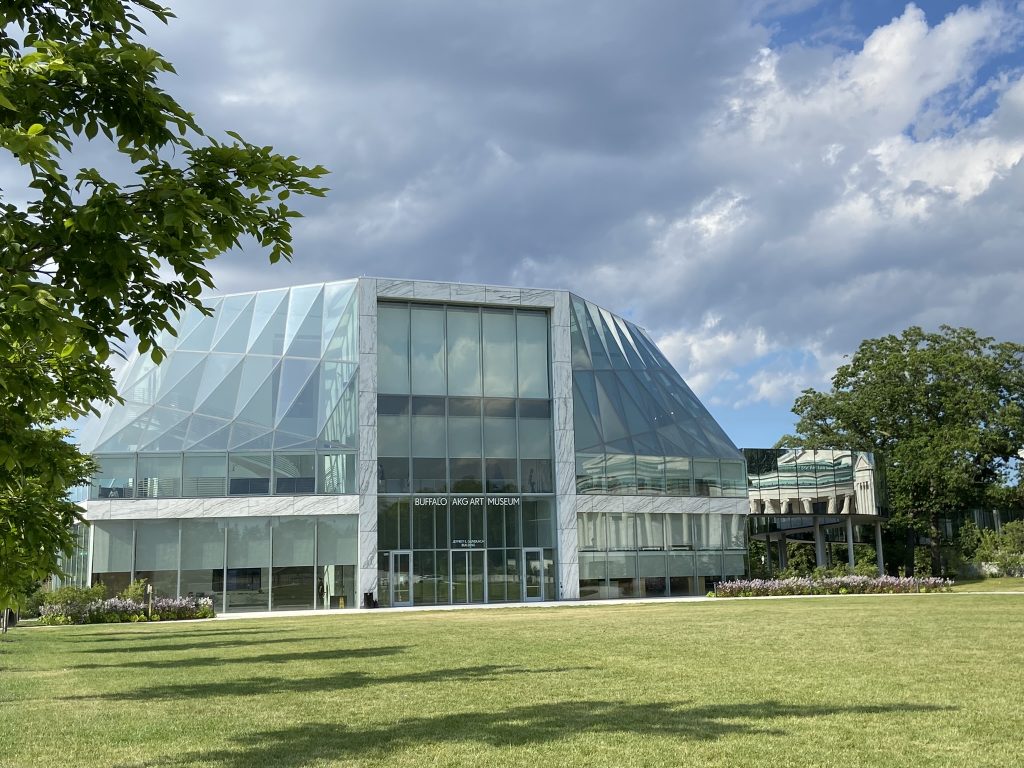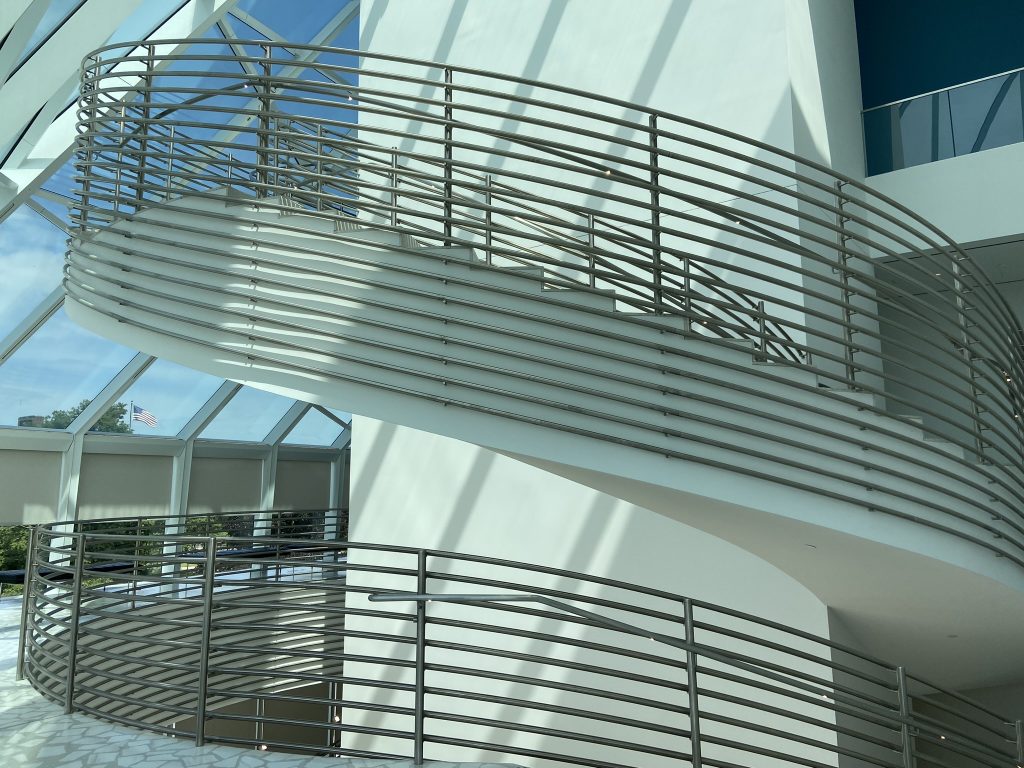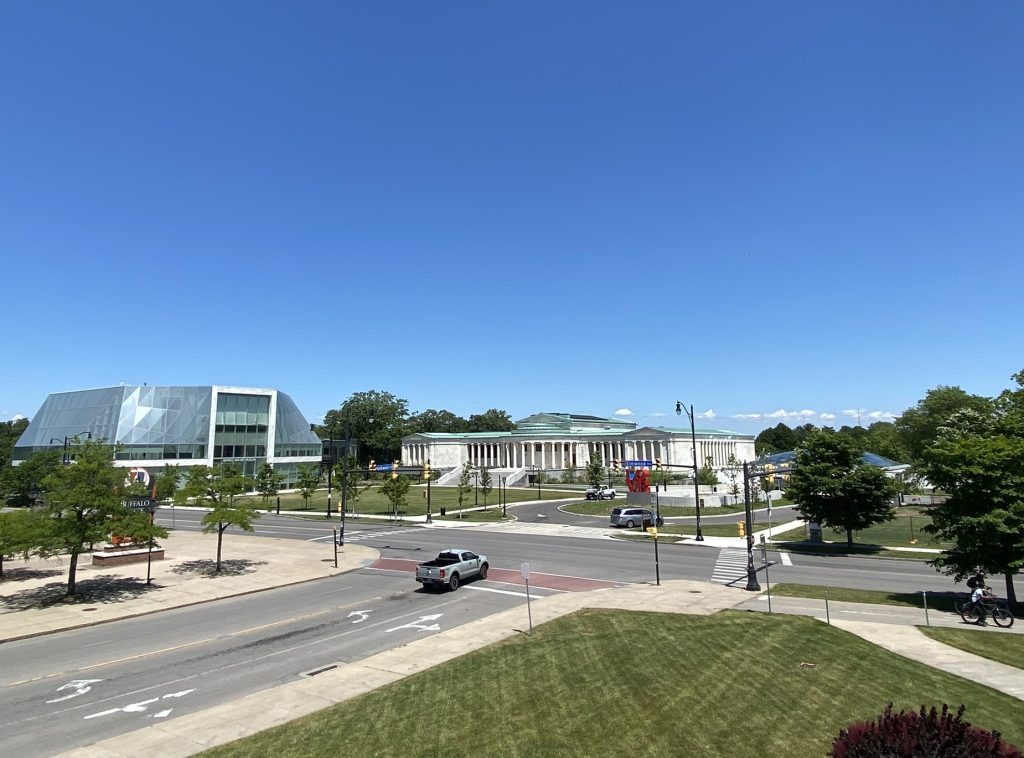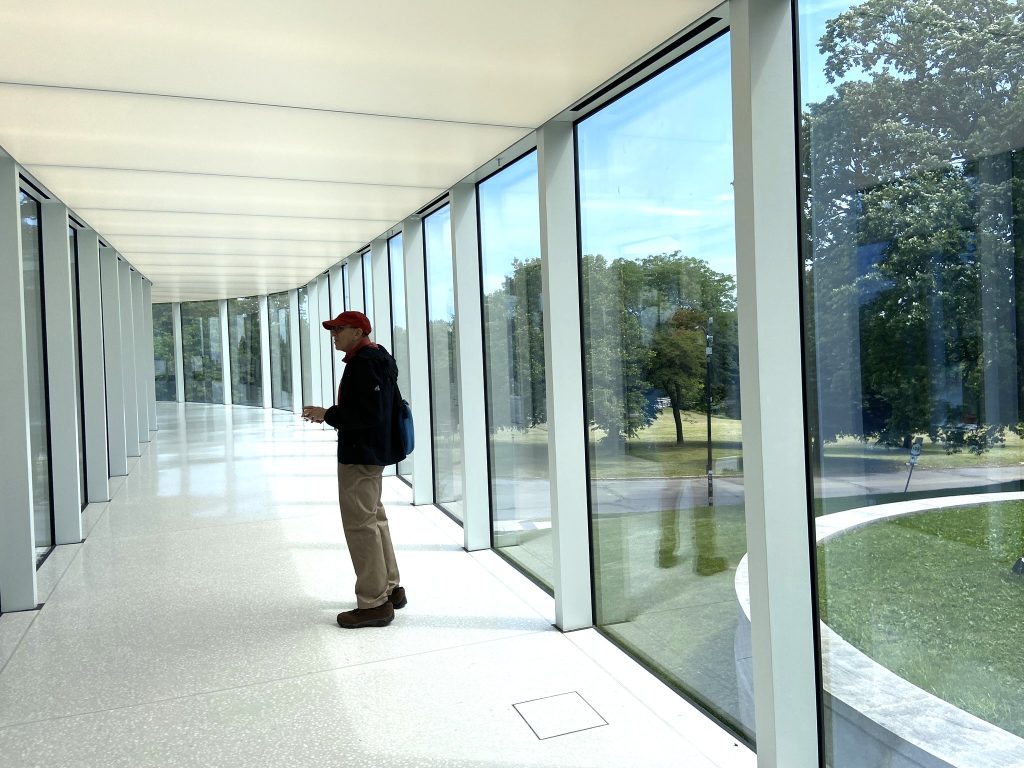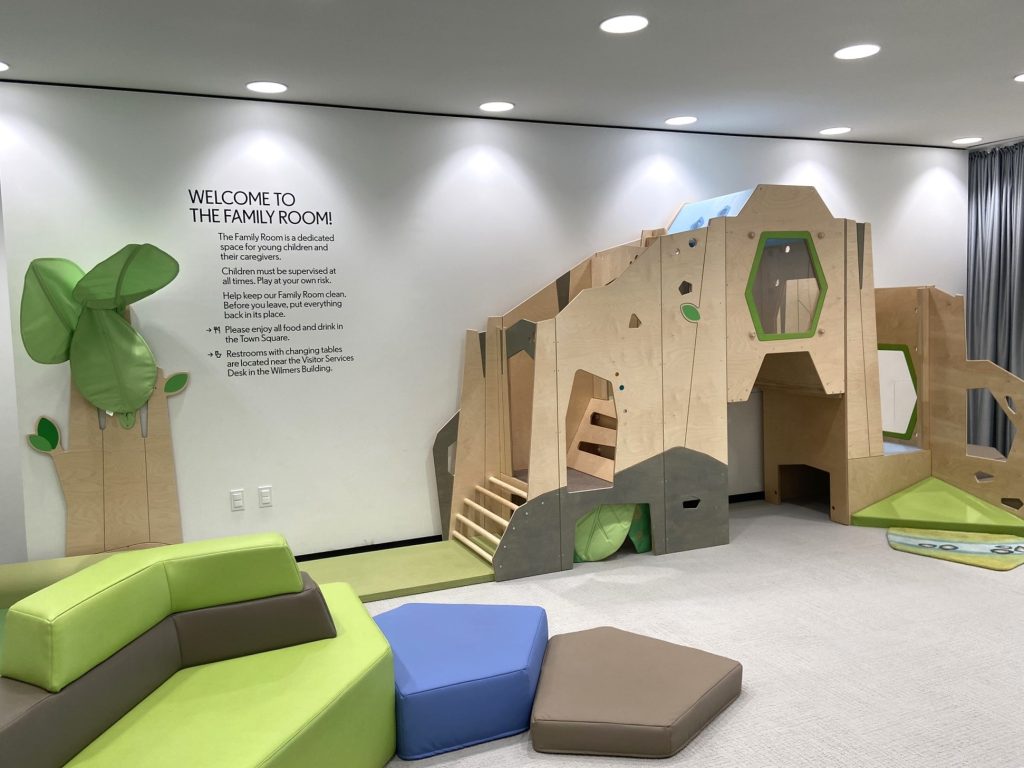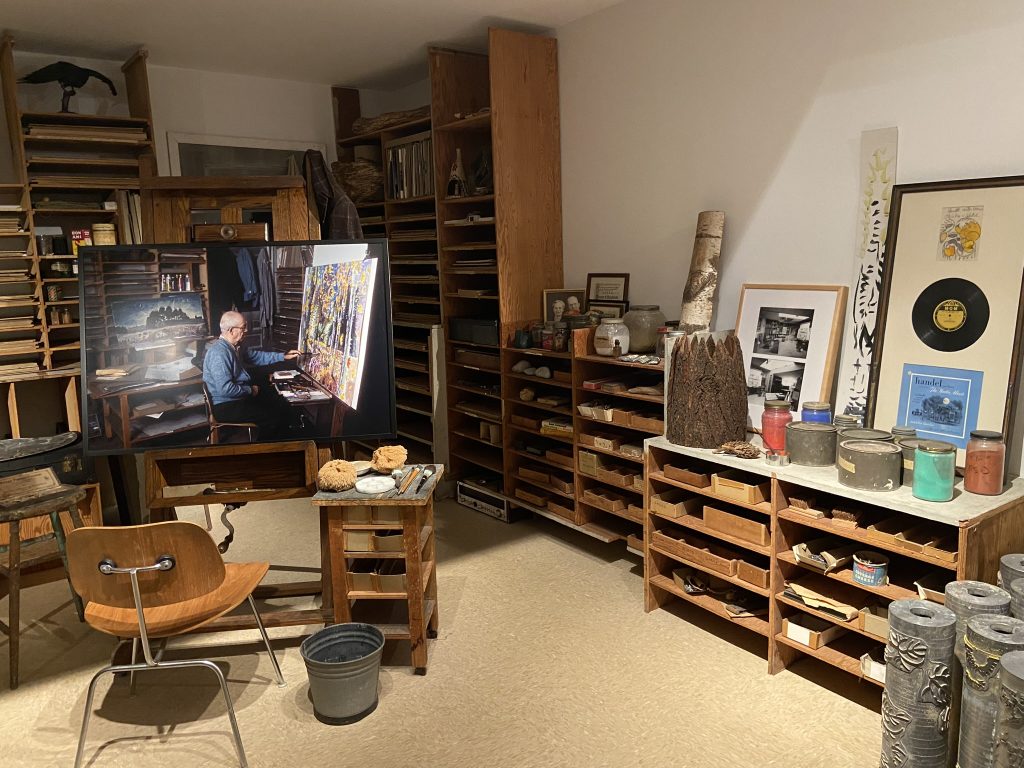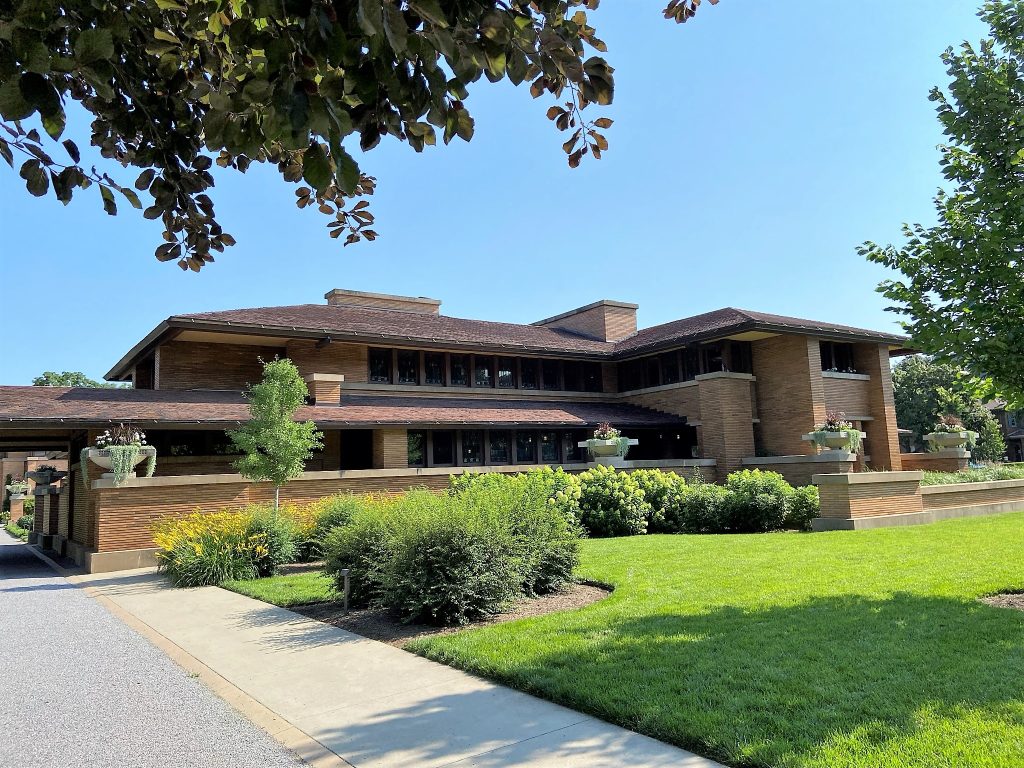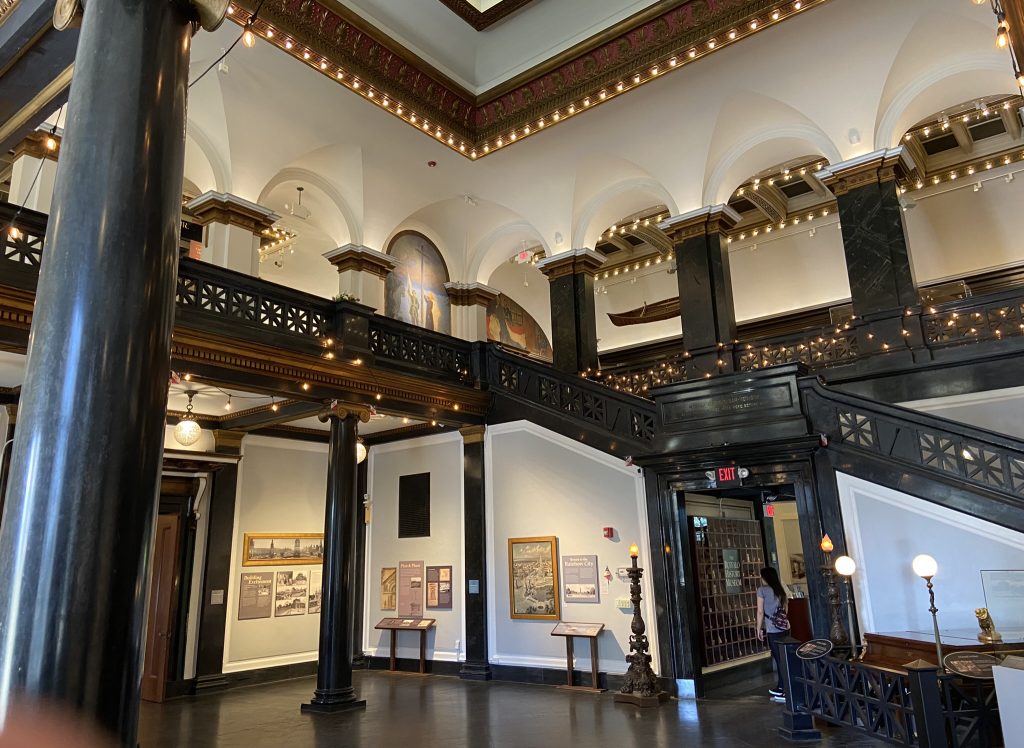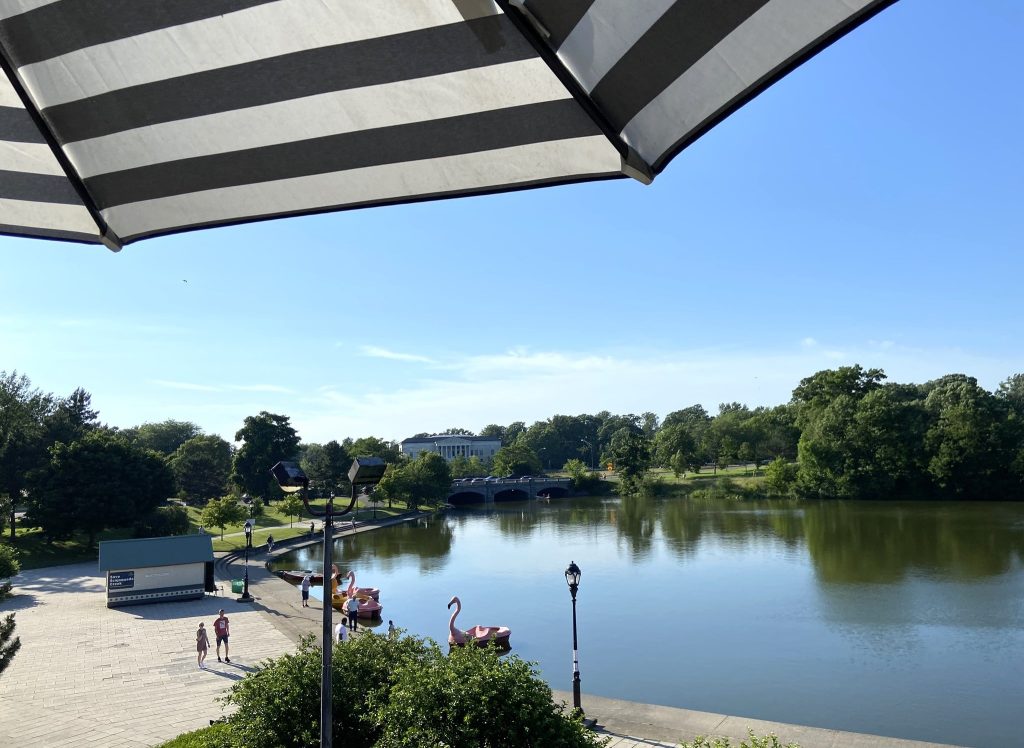In June 2024, the Buffalo AKG Art Museum (formerly named the Albright-Knox Art Gallery) celebrated the first anniversary of its reopening after a major transformation that added gallery space and enhanced the museum’s campus to better welcome and serve a diverse community. Known for its superb collection of modern and contemporary art, the museum doubled its exhibition space. This included 30,000 square feet in the new Gundlach Building for the permanent collection and special exhibitions such as the upcoming Marisol: A Retrospective (July 12, 2024 through January 6, 2025). The expansion also created the covered Wilson Town Square, an artmaking play area, and a gallery for special exhibits in the Knox Building; these are free to the public. Has the transformation been successful? Here’s one statistic: previously, about 125,000 people visited annually; in its first year, the Buffalo AKG reached 300,000 visitors.
Buffalo itself has changed since the museum’s forerunner was established in 1862. Its Greek revival marble structure (now the Wilmers Building), completed in 1905 with funds donated by John J. Albright, reflected the ambitions of this thriving industrial city in Western New York. A modernist addition by Buffalo-born architect Gordon Bunshaft (now the Knox Building, named for supporter Seymour H. Knox, Jr.) was completed in 1962. Buffalo’s economy flourished and declined during the 20th century, but art lovers continued to support the acquisition of cutting-edge art. The museum began planning a much-needed expansion in 2001 as Buffalo entered a post-industrial economic revival. Several years of town hall meetings and discussions with different communities also focused on making what had been seen by some as an elitist institution more accessible. A $65 million gift from investor and Western New York native Jeffrey E. Gundlach drove a $230 million capital campaign forward. (The “AKG” in the museum’s name acknowledges Albright, Knox, and Gundlach.) The project, designed by OMA/Shohei Shigematsu, broke ground in 2019 and was completed in June 2023.
Visiting the Buffalo AKG
Two museum entrances in the Knox Building (a third is in the Gundlach building) lead into Wilson Town Square, a space free to the public that includes the spectacular Common Sky, a site-specific, funnel-like canopy of glass, steel, and mirrors by Olafur Eliasson and Sebastian Behmann that extends from the floor to cover the space. The space and entrances connect the museum to Elmwood Avenue on one side and Olmsted-designed Delaware Park on the other; they also reflect the museum’s new openness. The Knox Building also contains other free areas like the M&T Bank Gallery for special exhibitions. On display there from March through September 30, Before and After Again presents paintings by Julia Bottoms, poems by Jillian Hanesworth, and prose by Tiffany Gaines that respond to the May 14, 2022, racially-motivated slayings of 10 Buffalonians at Tops Friendly Market on Jefferson Avenue. The art celebrates unique individuals and considers what healing might mean.
From the Town Square, visitors enter the Wilmers Building, where galleries reveal Buffalo AKG’s longtime collecting philosophy of acquiring works by living artists. Chronologically arranged galleries present a veritable textbook of major works representing significant movements in modern and contemporary art, such as impressionism and post-impressionism, early photography, expressionism, cubism, futurism, social realism, abstract expressionism, minimalism, digital art, and sound art, among others. The museum can now display around 400 (versus 200 before the expansion) of the 8,000 works in its collections, so installations change, but visitors may see works by Berthe Morisot, Vincent van Gogh, Henri Matisse, and Frida Kahlo. The deep collection of postwar American and European art includes major works by Willem de Kooning, Joan Mitchell, Mark Rothko, and Jackson Pollock. Buffalo AKG holds 33 works by Clyfford Still (31 were a gift from the artist) and more than 100 sculptures by Marisol, who bequeathed her estate to the museum in 2016. Some of the contemporary artists whose works have been added recently to the collection are Nick Cave, Jeffrey Gibson, Yayoi Kusama, and Kara Walker.
The Albright Bridge, a curving, glass-walled link between the Wilmers Building and the new Gundlach Building, offers views of the city, museum, and Delaware Park. The Gundlach Building, located closer to Elmwood Avenue than the museum’s other buildings, embodies the transparency that was the museum’s goal in a tapering structure with glass walls. Inside are three floors of galleries for contemporary art, a sculpture terrace, and a theater. Views from the building are stunning. The upcoming Marisol: A Retrospective exhibition will occupy the third floor, examining the full artistic practice of Marisol (Venezuelan and American, 1930–2016), an artist largely associated with pop art, though her later works address subjects from hunger to modern gender norms.
Community Offerings and Outreach
Free spaces in the Knox Building include the Town Square and Creative Commons, an area funded by the LEGO corporation that offers artmaking for ages 5 and up with Legos and activities linking art and technology. Besides the M&T Bank Gallery, the Knox Building has a family room where kids and their caregivers can unwind, a community access room, a digital media studio, and three studios used for the museum’s art classes (some free, some requiring a fee) for different ages and abilities, including family classes. Through Art’scool: School Tours, the museum offers free gallery tours for K–12 students. Access programs for under-resourced groups and people with disabilities are also available.
The museum’s enhanced public spaces host special events such as M&T First Fridays, with pay-what-you-wish admission and all-day and evening activities and tours, many of them free. Also on the event schedule are periodic free concerts in Wilson Town Square or on the museum’s Sculpture Terrace, and the free outdoor summer Lipsey Summer Jazz at the AKG concerts.
Buffalo AKG’s offerings extend beyond its walls. The Public Art Initiative, begun in 2013 and supported by the City of Buffalo and Erie County, has brought murals and installations to different communities. Created by local and international artists, the works support artists and inspire those who view the art. The museum’s popular Art Truck can be booked for events hosted by nonprofit organizations. It offers artmaking activities for people of all ages and backgrounds in Western New York.
Other Places to Visit Nearby
A gem designed by Olmsted & Vaux between 1868 and 1870, 350-acre Delaware Park borders Buffalo AKG and is easily accessed using the Wilson Town Square entrance. Rowboat or Flamingo boat rentals are available on the park’s Hoyt Lake. Also bordering Delaware Park is the Buffalo History Museum, a worthwhile stop for an incisive, artifact-packed look at Buffalo’s history in a neoclassical building that was the New York State Building for the 1901 Pan-American Exposition. The excellent Burchfield Penney Art Center, part of SUNY Buffalo State University, sits across Elmwood Avenue from Buffalo AKG. Its lovely modern building is the place to learn about the art and artists of Western New York, from Charles Burchfield and Roycroft objects (an Arts and Crafts–influenced movement based on a campus in nearby East Aurora that can be visited) to today’s artists. On the other side of Delaware Park, Frank Lloyd Wright’s Martin House is a magnificently restored six-building complex with one of the architect’s greatest Prairie-style houses.
Side Dish and Where to Stay Near Buffalo AKG
Buffalo AKG’s fast-casual Cornelia, part of Wilson Town Square, serves breakfast bites, as well as good sandwiches and fresh-made salads, in a pretty room. You can also eat in the Town Square. Tiny but terrific, Roux Soup Bar & Café at the Burchfield Penney Art Center has soups such as sweet potato and andouille and a vegan spicy African peanut, along with paninis and salads. The Terrace is a good bet for a relaxed lunch, brunch, a drink, or dinner in a vintage building with a view of Delaware Park’s Hoyt Lake. Cucina bar and restaurant, in the Richardson Hotel, serves traditional and contemporary Northern Italian fare; the bar has a short menu, too. Although it’s not near AKG Buffalo, the adorable Swan Street Diner (1937; moved on-site) in the Larkinville neighborhood southeast of downtown is highly recommended for a carefully made breakfast or lunch such as blueberry pancakes and a build-your-own omelet.
Buffalo has many downtown hotels, but Elmwood Village (Buffalo AKG’s neighborhood) has some unique lodgings, such as the Romanesque-style Richardson Hotel, in part of a massive former state asylum and psychiatric center designed by H. H. Richardson and opened in 1880, and InnBuffalo, a 13-room B&B in an 1898 mansion with modern amenities and ample historic charm.
Linda Cabasin is a travel editor and writer who covered the globe at Fodor’s before taking up the freelance life. Linda lived in Elmwood Village in Buffalo for two years and visited the art museum often. She’s a contributing editor at Fathom. Follow her on Instagram at @lcabasin.


